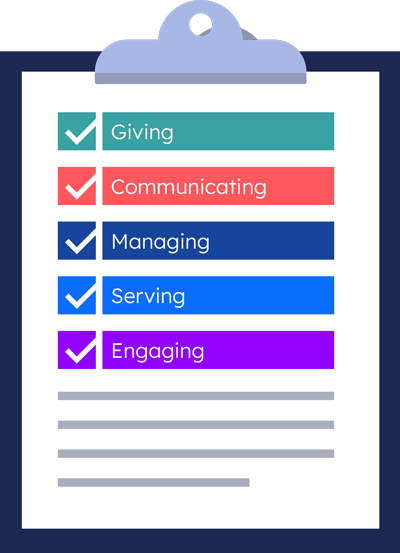Best Practices for Implementing Streamlined Communication
Regular Communication Audits
To create a church communication strategy that remained effective and consistent, we conducted regular communication audits. These audits involved reviewing the various channels and methods used to communicate with the congregation, assessing their effectiveness, and identifying any areas for improvement. By analyzing metrics such as engagement rates, message reach, and feedback from the congregation, we gained valuable insights into what was working and what needed adjustment. Regular audits also helped to keep our communication aligned with the church’s mission and goals.
Training Staff and Volunteers
I quickly learned that a streamlined communication strategy is only as strong as the people implementing it. That’s why we prioritized thorough training for church staff and volunteers on the tools and best practices used in our church’s communication efforts. Training ensured that everyone involved understood how to use communication platforms effectively, maintain consistency in messaging, and follow the established communication plan. It also empowered our team to handle the nuances of different communication channels, from crafting engaging social media posts to managing email campaigns. By investing in regular training sessions, we built a team that was well-equipped to carry out our communication strategy with confidence and competence.
Establishing Clear Communication Roles
To avoid confusion and overlap, we established clear roles and responsibilities for managing the different aspects of church communication. This involved designating specific individuals or teams to oversee social media, email campaigns, event promotion, or internal communication. By clearly defining who was responsible for each area, we ensured that all communication efforts were coordinated and that nothing fell through the cracks. Clear roles also helped to streamline decision-making processes, making it easier to respond quickly to communication needs as they arose. When everyone knew their role and understood how it fit into the larger strategy, our church’s communication became more organized, efficient, and impactful.
Monitoring and Adjusting Communication Strategies
Gathering Feedback from the Congregation
One of the most effective ways I found to keep our church’s communication strategy on track with the congregation was by gathering regular feedback. We did this through surveys, suggestion boxes, and informal conversations, allowing members to share their thoughts on how they perceived and received church communications. Feedback provided invaluable insights into what was working well and where there might be gaps or areas for improvement. It also gave the congregation a sense of ownership and involvement in the communication process, fostering a stronger connection to the church’s mission and activities. By actively seeking and responding to feedback, we made informed adjustments that better served the needs of our community.
Adapting to Changing Needs and Technologies
In the rapidly evolving landscape of digital communication, staying flexible is key. As new technologies emerged and the needs of our congregation shifted, we adapted our communication strategies accordingly. This sometimes meant exploring new platforms for engagement, updating existing tools to better serve our community, or refining our messaging to address current issues and trends. Flexibility made it so that our church remained relevant and effective in its communication efforts, allowing us to reach our congregation where they were and in ways that resonated with them. By regularly reviewing and adjusting our strategies, we stayed ahead of changes and continued to connect with our community in meaningful and impactful ways.
Conclusion
Reflecting on my time as a communications director, I can see how an effective church communication strategy offers numerous benefits that can significantly enhance the effectiveness of your ministry. By adopting a consistent approach to messaging, utilizing key tools like Church Management Software and email marketing platforms, and regularly auditing and adjusting your strategies, you can create a communication system that keeps everyone informed, engaged, and connected.
Implementing these strategies not only helps to eliminate confusion and inefficiencies but also fosters a stronger sense of community and trust within the congregation. When communication is clear and consistent, members are more likely to participate in church activities, feel valued, and stay connected to the church’s mission.
As you consider the communication needs of your church, I encourage you to explore these tools and best practices. By doing so, you’ll be better equipped to reach your congregation effectively, ensuring that every message is delivered with clarity and purpose. The result will be a more unified, informed, and engaged church community—one that is better positioned to grow together in faith and mission, following the example of Jesus Christ.









